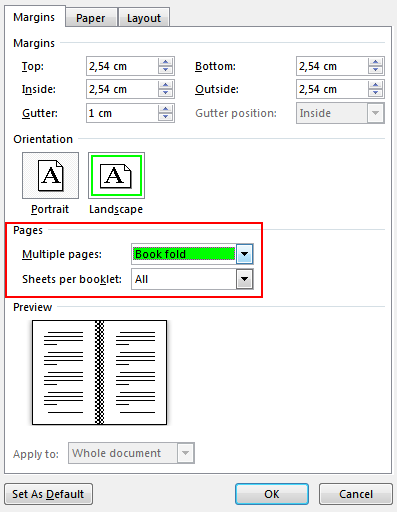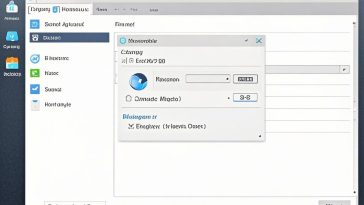Introduction
Writing a book is a significant accomplishment, and with the right tools and guidance, it can be a rewarding experience. Microsoft Word is a powerful word processing software that provides a wide range of features to help you create, format, and publish your book. In this comprehensive tutorial, we’ll guide you through the entire process of creating a book in Microsoft Word, from setting up your project to exporting and publishing your work.
Part 1: Setting Up Your Book Project
1.1 Creating a New Document
- Launch Microsoft Wordon your computer.
- Go to the “File” menu and select “New.”
- Choose the “Blank document” option.
Alternatively, you can use a keyboard shortcut (Ctrl+N on Windows or Command+N on Mac) to open a new document quickly.
Once you have a new document open, you’ll need to set the page size and orientation to match your desired book format. Most books are printed on standard letter or A4 paper size, with portrait orientation. However, you can choose a different page size and orientation if your book requires a unique format.
If your version of Word includes book formatting templates, you can apply one to your document to get started with pre-configured settings for page layout, fonts, and styles.
1.2 Configuring Page Layout
Setting Margins: Go to the “Layout” tab and click on the “Margins” button. From the drop-down menu, choose the appropriate margin settings for your book. A common choice is the “Normal” or “Book” preset, which sets the margins to 1 inch (2.54 cm) on all sides.
Adding Page Numbers: To insert page numbers, navigate to the “Insert” tab and click on the “Page Number” button. Select the desired position for the page numbers (e.g., top or bottom of the page) and choose a formatting style.
Inserting Headers and Footers: Headers and footers are useful for including additional information, such as the book title, chapter names, or author name. Go to the “Insert” tab and click on the “Header” or “Footer” button. From the drop-down menu, choose the appropriate option (e.g., “Blank” or “Edit Header/Footer”) and enter your desired content.
Applying Section Breaks: Section breaks allow you to apply different formatting and layout settings to different parts of your book. To insert a section break, place your cursor at the desired location and go to the “Layout” tab. Click on the “Breaks” button and select the appropriate section break type (e.g., “Next Page” or “Continuous”).
1.3 Formatting Text
Choosing Appropriate Font Styles and Sizes: Select a font that is easy to read and appropriate for your book’s genre. Common choices for book fonts include Times New Roman, Garamond, and Baskerville. Adjust the font size to ensure readability, typically between 10 and 12 points for body text.
Line Spacing and Paragraph Settings: Proper line spacing and paragraph settings can enhance the overall readability of your book. Go to the “Home” tab and adjust the line spacing and paragraph settings using the respective options. A common choice for line spacing is 1.5 or double spacing.
Using Styles for Consistent Formatting: Word’s built-in styles feature allows you to apply consistent formatting to different elements of your book, such as chapter titles, headings, and body text. Go to the “Home” tab and explore the available styles in the “Styles” group. You can also modify existing styles or create your own custom styles to match your book’s design.
Part 2: Organizing Your Book Content
2.1 Creating a Table of Contents
Inserting the Table of Contents: Place your cursor where you want the table of contents to appear, usually at the beginning of the document. Go to the “References” tab and click on the “Table of Contents” button. Select the desired style for your table of contents from the drop-down menu.
Updating and Customizing the Table of Contents: After inserting the table of contents, you can customize its appearance and update it as you make changes to your book’s content. Right-click on the table of contents and select “Update Field” to ensure it reflects the latest changes. Additionally, you can modify the table of contents styles and formatting by right-clicking and selecting “Edit Field” or “Edit Table of Contents.”
2.2 Structuring Chapters and Sections
Adding Chapter Titles and Headings: To create a new chapter, insert a page break and add a chapter title using the appropriate heading style (e.g., “Heading 1” for chapter titles). Use the “Home” tab and the “Heading” styles to apply consistent formatting for different levels of headings within each chapter.
Using the Navigation Pane: The Navigation pane in Word provides an outline view of your document, making it easy to navigate and reorganize chapters and sections. Go to the “View” tab and click on the “Navigation Pane” button to open the pane. You can expand or collapse chapters and sections, rearrange them by dragging and dropping, or quickly navigate to specific sections.
Applying Heading Styles: Consistent use of heading styles is crucial for creating a well-structured book and enabling features like the table of contents and navigation pane. Always apply the appropriate heading style (e.g., “Heading 1” for chapter titles, “Heading 2” for section titles) rather than manually formatting headings.
2.3 Incorporating Images and Multimedia
Inserting Images: To insert an image, place your cursor where you want the image to appear and go to the “Insert” tab. Click on the “Pictures” button and navigate to the desired image file on your computer. Select the image and click “Insert.”
Wrapping Text Around Images: To wrap text around an image, right-click on the image and select “Wrap Text.” Choose the desired wrapping style (e.g., “Tight” or “Square”) to control how the text flows around the image.
Adding Captions and Cross-References: Captions provide additional context and information for images, charts, and tables. To insert a caption, right-click on the image or object and select “Insert Caption.” You can also create cross-references to these elements by going to the “References” tab and clicking on the “Cross-reference” button.
Part 3: Advanced Book Formatting
3.1 Working with Styles and Templates
Creating and Modifying Custom Styles: If the built-in styles in Word don’t meet your needs, you can create your own custom styles. Go to the “Home” tab, right-click on an existing style in the “Styles” group, and select “Create a Style.” You can then customize the font, paragraph settings, and other formatting options to match your desired style.
Applying and Managing Styles: Once you have your custom styles set up, you can apply them to different elements of your book by selecting the text or object and clicking on the appropriate style in the “Styles” group. To manage and modify your styles, go to the “Home” tab and click on the “Styles” dialog box launcher (the small arrow in the bottom-right corner of the “Styles” group).
Using Templates: Word provides a variety of pre-designed templates that can save you time and ensure consistency in your book’s formatting. Go to the “File” menu and select “New.” In the “New” window, search for and select a book template that matches your desired style and layout.
3.2 Indexing and Cross-Referencing
Creating an Index: To create an index, first mark the terms or phrases you want to include in the index. Select the word or phrase, go to the “References” tab, and click on the “Mark Entry” button. In the “Mark Index Entry” dialog box, you can specify the main entry and any subentries or cross-references.
After marking all the terms, place your cursor where you want the index to appear (usually at the end of the document), go to the “References” tab, and click on the “Insert Index” button. Word will automatically generate an index based on the marked entries.
Inserting Cross-References: Cross-references allow you to link to specific elements within your book, such as headings, figures, or tables. To insert a cross-reference, place your cursor where you want the reference to appear, go to the “References” tab, and click on the “Cross-reference” button.
In the “Cross-reference” dialog box, select the appropriate reference type (e.g., “Heading,” “Figure,” or “Table”) and choose the specific item you want to reference. Word will insert a hyperlinked cross-reference that readers can click to navigate to the referenced item.
Updating Fields: Cross-references and indexes are dynamically generated fields in Word. If you make changes to your book’s content or structure, you’ll need to update these fields to ensure they reflect the latest information.
To update a field, right-click on the field and select “Update Field” from the context menu. Alternatively, you can go to the “Fields” group on the “Insert” tab and click on the “Update Field” button to update all fields in your document.
3.3 Reviewing and Finalizing
Using Track Changes for Collaboration: If you’re collaborating with editors, proofreaders, or co-authors, Word’s Track Changes feature can be invaluable. Go to the “Review” tab and click on the “Track Changes” button to turn on change tracking. Any edits or comments made by collaborators will be tracked, allowing you to review and accept or reject the changes easily.
Running Spell Check and Grammar Check: Catching spelling and grammar errors is crucial for a polished book. Go to the “Review” tab and click on the “Spelling & Grammar” button (or press F7) to initiate a spell and grammar check. Word will highlight any potential errors, allowing you to review and correct them as needed.
Adding a Table of Figures and Bibliography: If your book includes figures, charts, or tables, you may want to include a table of figures to help readers locate these visual elements. Similarly, if you’ve cited external sources in your book, a bibliography is essential for listing and crediting those sources.
To create a table of figures or bibliography, place your cursor where you want the list to appear, go to the “References” tab, and click on the appropriate button (“Insert Table of Figures” or “Bibliography”). Follow the prompts to select the desired style and formatting options.
Part 4: Exporting and Publishing
4.1 Saving and Exporting Options
Saving Your Book as a Word Document: The most straightforward option is to save your book as a Word document (.docx) by going to the “File” menu and selecting “Save As.” This format preserves all your formatting and allows you to continue editing or making changes later if needed.
Exporting to PDF: To create a PDF version of your book, go to the “File” menu, select “Export,” and choose “Create PDF/XPS Document.” This option is ideal if you want to share your book in a read-only format or prepare it for print-on-demand services.
Exporting to EPUB or Other Ebook Formats: If you plan to publish your book as an ebook, you may need to export it to formats like EPUB or MOBI. In Word, go to the “File” menu, select “Export,” and choose the desired ebook format. Some third-party plugins or conversion tools may be required for certain formats.
4.2 Self-Publishing Platforms
Amazon Kindle Direct Publishing (KDP): KDP allows you to self-publish your book as an ebook or print book and make it available on Amazon’s global marketplace. KDP has specific formatting requirements, so you may need to adjust your Word document accordingly.
Draft2Digital: This platform enables you to publish your book in multiple ebook formats (EPUB, MOBI, PDF) and distribute it across various online retailers, such as Apple Books, Barnes & Noble, and Kobo.
IngramSpark: IngramSpark is a print-on-demand service that allows you to publish and distribute both physical and ebook versions of your book. They offer global distribution and various printing options.
Before publishing on any platform, be sure to review their guidelines and formatting requirements to ensure your book meets their standards.
4.3 Printing and Binding
Preparing Your Book for Print: Before printing, review your document’s layout and formatting to ensure it’s optimized for print. This may include adjusting margins, page sizes, and other settings specific to your desired book format.
Working with Print-on-Demand Services: Print-on-demand (POD) services like KDP Print (Amazon), IngramSpark, or BookBaby allow you to upload your book files and order printed copies as needed, without the need for large upfront print runs.
Local Printing and Binding Services: Depending on your location and budget, you may also consider working with local printing and binding services. These companies can produce high-quality printed books, but often require larger print runs and may have higher costs.
When printing your book, be sure to discuss options for paper quality, binding styles (e.g., perfect bound, hardcover), and any additional finishing touches you desire.
Conclusion
Creating a book in Microsoft Word is a rewarding process that requires attention to detail, organization, and a thorough understanding of Word’s features. By following the steps outlined in this tutorial, you’ll be well-equipped to structure your book, format it professionally, and prepare it for publishing or printing.
Remember to take advantage of Word’s powerful tools, such as styles, templates, indexing, and cross-referencing, to ensure a polished and user-friendly final product. Additionally, explore self-publishing platforms and printing options to make your book available to readers worldwide.
Writing a book is a significant undertaking, but with the right tools and guidance, you can turn your ideas into a tangible, professionally formatted book that you can be proud of. Happy writing!
For further reading and additional resources, consider exploring Word’s documentation, online tutorials, and author communities for more tips and advice on book writing and publishing.






